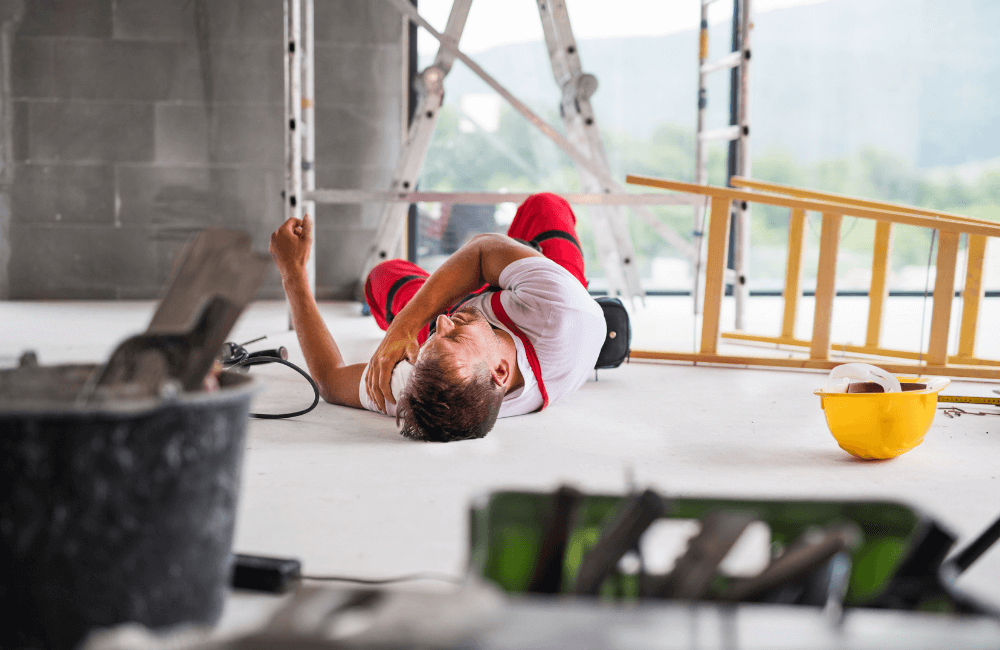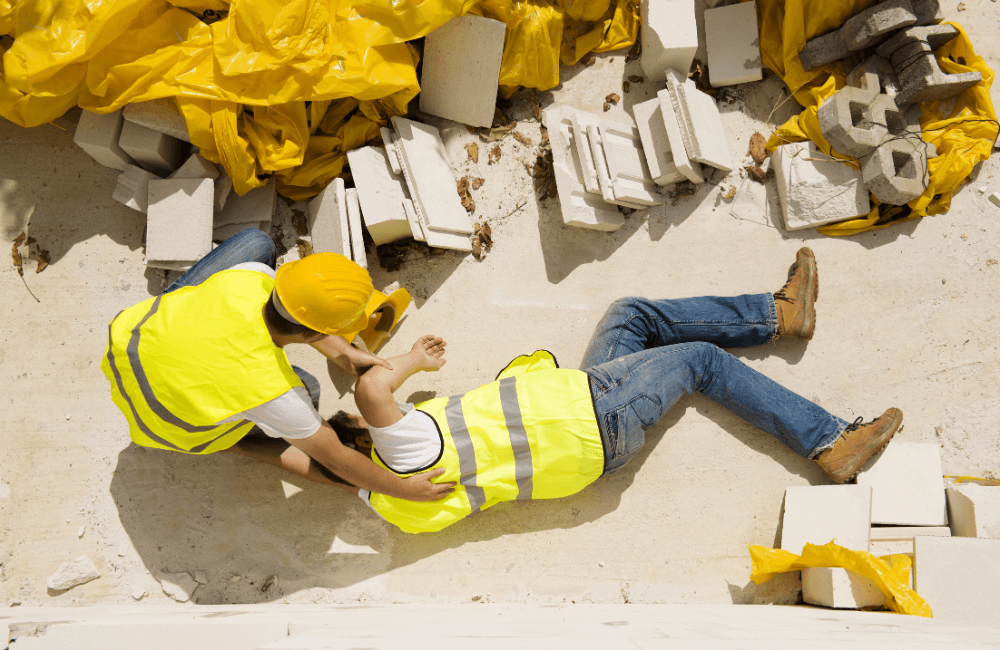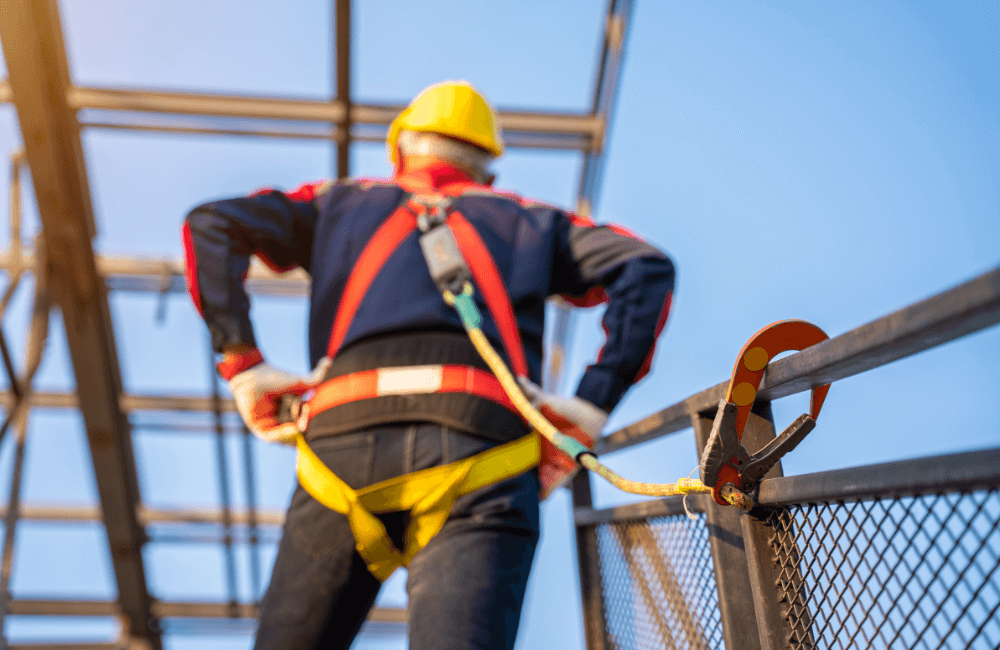Get A Free Quote
1300 007 782
Call Us On:
1300 007 782G10/RMS Accredited
Competitive Rates
ZERO Accidents or Injuries
25+ years combined experience
50+ years combined experience
Competitive Rates
G10/RMS Accredited
ISO Certified

In the NSW construction industry, falls from heights are the leading cause of injuries and deaths. Workers don’t even have to be particularly high up for falls to occur. Falls can occur from steps, stairs and curbs and into holes, ditches or voids.
As a person conducting a business or undertaking (PCBU), you have a responsibility to eliminate or reduce the risk of falls as much as reasonably practicable. Fortunately, innovative construction fall prevention systems are transforming the field of construction site safety. These systems are focused on being user-friendly, dynamic and adaptable so they can be adapted to each construction site’s unique conditions. Incorporating the latest technological advancements, these innovative methods to prevent falls in construction can be integrated into every stage of the building process.
Adopting these construction fall prevention strategies in your workplace can prevent tragedies, protect you from legal action, and prevent loss of revenue and reputation.
As a safety-focused company trusted by some of the country’s biggest names in construction, SSTC knows how to protect workers. We can assess your worksite and show you how to prevent falls from heights in construction, plus help you put together the plans and procure the permits necessary for you to operate.
Construction site falls are common in Australia. Every year, an average of 29 people die from work-related falls, and 21 workers a day lodge a claim for a fall-related injury. Construction is the industry with the highest number of fall-related claims, by far, at 20%. In 2022, there were 865 fatalities caused by slips, trips and falls, and more than half of those who died were construction workers.
There are several ways falls can occur on construction sites, including working at heights and slipping, inadequate lighting, being hit by falling objects, falling from ladders, or falling into a hole or ditch. Falls don’t have to be from great heights to be dangerous; even a fall from a ladder positioned a few feet off the ground can have serious consequences.
Many falls can be prevented with proper planning and the right tools, including reliable construction fall prevention equipment.

The most innovative methods to prevent falls in construction include:
A Personal Fall Arrest (PFA) system consists of a full-body harness, an anchor point, a lanyard, and a lifeline. One end is attached to the worker’s harness, the other to the lanyard, which will engage and stop the worker from hitting the ground in case of a fall.
A cornerstone of construction fall prevention strategies, PFAs are built with comfort, durability, and ergonomics in mind, and they are adjustable to accommodate the body types of different workers.
Guardrails are horizontal barriers installed along the edges of scaffolding platforms. They consist of top rails, intermediate rails, and toeboards. Guardrail systems come in both temporary and permanent varieties and prevent workers from falling. Temporary guardrails are relatively easy to set up and can be adjusted as the size and nature of the project change.
Toeboards are horizontal barriers attached to the edges of scaffolding platforms. They prevent equipment, materials, and tools from falling off the edge. Commonly used in conjunction with fall prevention systems like guardrails, they protect anyone standing near the scaffold.
Safety nets have one purpose that makes them essential on construction sites: they catch workers when they fall, preventing injury or death. Made from a mesh-like material installed beneath the scaffolding, safety nets are usually made from nylon or polypropylene. They are typically used in conjunction with other measures like guardrails and PFAs. They should be placed as close as possible to the working area to minimise the distance of a worker’s fall.
Scaffolding can also be enclosed with material like solid sheeting and mesh, which help prevent falling objects and unauthorised access.
Temporary work platforms come in various types, such as scaffolds, aerial lifts and scissor lifts. Although they aren’t technically fall-prevention devices, how you install and maintain them has a huge impact on fall prevention on your construction site.
Cocoon systems have scaffold structures that create a protective “shell” around each building level under construction. These shells are integrated with the building's structure and ascend along with the work as the construction process progresses.
A recent innovation in construction fall prevention, SRDs function in the same way as auto-locking seatbelts. They extend and retract as necessary, stopping workers from falling if they slip.
If a worst-case scenario happens and a fall occurs on your construction site, here’s what you should do:
Determine the injured person's state and the appropriate response. Look for any additional hazards in the area and make sure the person is safe to approach.
Immediately call emergency services to request assistance and medical care, especially if the person is unconscious or unresponsive.
If you or another team member has the training, administer first aid if necessary. Be sure to keep the injured person calm and still.
Alert the person in charge of the incident as soon as possible.
Section off the area and restrict access using barriers such as cones, tape, or fencing. This will help prevent further accidents and ensure that the situation is being handled appropriately. It’s important not to move any equipment or materials involved in the accident so that investigators can accurately identify its cause and any relevant safety hazards.
A qualified professional needs to investigate the accident as soon as possible to determine its cause and identify the safety hazards that caused it.
Offer support to the affected person, witnesses, and other workers in any way they need. This might include medical attention, counselling or further training.

SSTC goes above and beyond with innovative and advanced construction fall prevention measures to protect you and your staff. A team with over 25 years of combined industry experience, we offer a deep knowledge of safety procedures, a military-influenced, disciplined approach to our work, competitive rates and a dedication to safety that’s second to none.
When the right plans are put in place, they increase the safety of your construction site, and SSTC’s plans and permits provide the right support for your construction site in several ways. We offer site establishment plans to provide your construction project with a strong foundation, permit applications from different authorities and authority liaisons to fill you in on the approvals, plans, permits, and guidelines you need, among other services.
With our industrial services, we offer site-specific safe work method statements, risk assessments and permits for working at heights, in confined spaces and other site-specific scenarios.
If you’re serious about construction fall prevention on your own site, do it the right way, the SSTC way and contact us for a free quote.